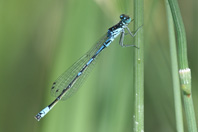Abstract
The seed beetle Gibbobruchus tridentatus Manfio, Jorge & Ribeiro-Costa sp. nov. is described from the Amazon basin in Brazil (Acre) and Ecuador (Napo), and is included in an updated key to the species of Gibbobruchus Pic. This new species and the recently described G. bergamini Manfio & Ribeiro-Costa are incorporated into a phylogenetic reanalysis of the genus and into a comparative analysis of host plant use and biogeography. Species groups previously proposed were supported and the evolutionary history in host plant-use shows Gibbobruchus conserved at tribe level, Cercideae (Caesalpinioideae), with coordination between biogeographic expansion and host genus shifts. Both species, Gibbobruchus tridentatus Manfio, Jorge & Ribeiro-Costa sp. nov. and G. bergamini, were placed within the group scurra (G. tridentatus (G. scurra (G. cavillator+G. bolivianus+G. bergamini))) and supported by one synapomorphy. Additionally, we update geographic distributions and host plant records. Two hosts, Bauhinia argentinensis Burkart and B. tarapotensis Benth. are recorded for the first time as hosts for the genus and for the subfamily.
References
Albuquerque, F.P., Manfio, D. & Ribeiro-Costa, C.S. (2014) A contribution to the knowledge of New World Bruchinae (Coleoptera, Chrysomelidae): taxonomic revision of Ctenocolum Kingsolver & Whitehead, with description of five new species. Zootaxa, 3838 (1), 1–45.
http://dx.doi.org/10.11646/zootaxa.3838.1.1Bondar, G. (1931) Notas biológicas sobre alguns bruchídeos brasileiros do gênero Pseudopachymerus. Revista de Entomologia, 1 (4), 417–422.
Borowiec, L. (1987) The genera of seed-beetles (Coleoptera: Bruchidae). Polski Pismo Entomologizcne, 57, 3–207.
Bremer, K. (1994) Branch support and tree stability. Cladistics, 10 (3), 295–304.
http://dx.doi.org/10.1111/j.1096-0031.1994.tb00179.xCenter, T.D. & Johnson, C.D. (1976) Host plant and parasites of some Arizona seed-feeding insects. Annals of the Entomological Society of America, 69, 195–201.
Fitch, W.M. (1971) Toward defining the course of evolution: minimum change for a specific tree topology. Systematic Zoology, 20, 406–416.
http://dx.doi.org/10.2307/2412116Fortunato, R.H. (1986) Revision del genero Bauhinia (Cercideae, Caesalpinioideae, Fabaceae) para la Argentina. Darwiniana, 27, 527–557.
http://dx.doi.org/10.1590/S0100-84042005000300006Goloboff, P.A., Farris, J.S. & Nixon, K.C. (2008) TNT, a free program for phylogenetic analysis. Cladistics, 24 (5), 774–786.
http://dx.doi.org/10.1111/j.1096-0031.2008.00217.xHopkins, M. (1942) Cercis in North America. Rhodora, 44,192–211.
ICZN (1999) International Code of Zoological Nomenclature, fourth edition [online version]. The International Trust for Zoological Nomenclature, London, xxix + 1–306. Available from: http://www.nhm.ac.uk/hosted-sites/iczn/code/ (acessed 22 July 2015)
Janzen, D.H. (1977) The interaction of seed predators and seed chemistry. In: Labeyrie, V. (Ed.), Comportement des insectes et milieu trophique. C.N.R.S, Paris, pp. 415–428.
Kingsolver, J.M. (1988) Systematics of the genus Merobruchus of Continental North America and the West Indies (Coleoptera: Bruchidae). United States Department of Agriculture Technical Bulletin, 1744, 1–63.
Kingsolver, J.M. & Whitehead, D.R. (1974a) Biosystematics of Central American species of Ctenocolum, a new genus of seed beetles (Coleoptera: Bruchidae). Proceedings of the Biological Society of Washington, 87 (27), 283–312.
Kingsolver, J.M. & Whitehead, D.R. (1974b) Classification and comparative biology of the seed beetle genus Caryedes Hummel (Coleoptera: Bruchidae). Transactions of the American Entomological Society, 100 (4), 341–436.
Kingsolver, J.M. & Whitehead, D.R. (1976) The North and Central American species of Meibomeus (Coleoptera: Bruchidae: Bruchinae). United States Department of Agriculture Technical Bulletin, 1523, 1–54.
Lawrence, J.F., Beutel, R.G., Leschen, R.A.B. & Ślipiński, A. (2010) Glossary of morphological terms. In: Leschen, R.A.B., Beutel, R.G. & Lawrence, J.F. (Eds.), Handbook of Zoology. Vol. 2. Morphology and Systematics (Elateroidea, Bostrichformia, Cucujiformia partim). Walter de Gruyter, Berlin, pp. 9–20.
Le Ru, B.P., Delobel, A., György, Z., Genson, G. & Kergoat, G.J. (2014) Taxonomy, host-plant associations and phylogeny of African Crotalaria-feeding seed beetles (Coleoptera, Chrysomelidae, Bruchinae): the Conicobruchus strangulatus (Fåhraeus) species group. Zootaxa, 3895 (2), 238–256.
http://dx.doi.org/10.11646/zootaxa.3895.2.6Maddison, W.P. & Maddison, D.R. (2015) Mesquite: a modular system for evolutionary analysis. Version 3.04. Available from: http://mesquiteproject.org (accessed 26 August 2015)
Macêdo, M.V., Lewinsohn, T.M. & Kingsolver, J.M. (1992) New host records of some bruchids species in Brazil with the description of a new species of Caryedes (Coleoptera: Bruchidae). The Coleopterists Bulletin, 46 (4), 330–336.
Manfio, D., Ribeiro-Costa, C.S. & Caron, E. (2013) Phylogeny and revision of the New World seed-feeding bruchine genus Gibbobruchus Pic (Coleoptera: Chrysomelidae). Invertebrate Systematics, 27 (1), 1–37.
http://dx.doi.org/10.1071/IS11047Ratcliffe, B.C. (2013) Best writing and curatorial practices for describing a new species of beetle: a primer. The Coleopterists Bulletin, 67 (2), 107–113.
http://dx.doi.org/10.1649/0010-065X-67.2.107Ribeiro-Costa, C.S., Manfio, D. & Bergamini, L.L. (2014) A new species of Gibbobruchus from Brazil, with new host plant and distribution records for the Genus (Coleoptera: Chrysomelidae: Bruchinae). Florida Entomologist, 97 (3), 1085–1092.
http://dx.doi.org/10.1653/024.097.0313Schrottky, C. (1906) Über die Lebensweise zweier Pachymerus (Bruchidae) und ihrer Parasiten. Zeitschrift für Wissenschaftliche Insektenbiologie, 2, 98–104.
Silva, J.A.P. & Ribeiro-Costa, C.S. (2008) Morfologia comparada dos gêneros do grupo Merobruchus (Coleoptera: Chrysomelidae: Bruchinae): diagnoses e chave. Revista Brasileira de Zoologia, 25 (4), 802–826.
http://dx.doi.org/10.1590/s0101-81752008000400021Trethowan, L., Clark, R. & Mackinder, B. (2015) A synopsis of the neotropical genus Schnella (Cercideae: Caesalpinioideae: Leguminosae) including 12 new combinations. Phytotaxa, 204 (4), 237–252.
http://dx.doi.org/10.11646/phytotaxa.204.4.1Udvardy, M.D.F. (1975) A classification of the biogeographical provinces of the world. (IUCN Occasional Paper 18.) International Union for Conservation of Nature and Natural Resources, Morges, 49 pp.
Vaz, A.M.S.F, Bortoluzzi, R.L.C. & Silva, L.A.E. (2010) Checklist of Bauhinia sensu stricto (Caesalpiniaceae) in Brazil. Plant Ecology and Evolution, 143 (2), 212–221.
http://dx.doi.org/10.5091/plecevo.2010.391Whitehead, D.R. & Kingsolver, J.M. (1975) Biosystematics of the North and Central American species of Gibbobruchus (Coleoptera: Bruchidae: Bruchinae). Transactions of the American Entomological Society, 101, 167–225.
Wunderlin, R.P. (1983) Revision of the arborescent bauhinias (Fabaceae: Caesalpinioideae: Cercideae) native to Middle America. Annals of the Missouri Botanical Garden, 70, 95–127.
Zacher, F. (1952) Die Nährpflanzen der Samenkäfer. Zeitschrift für angewandte Entomologie, 33, 460–480.

